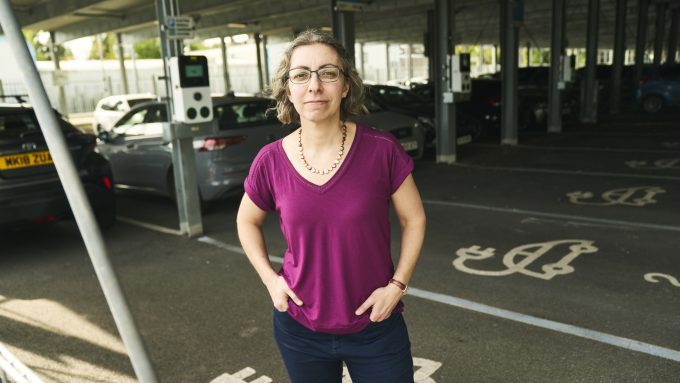
Just one week into the COVID-19 lockdown award-winning Artificial Intelligence developer Vivacity Labs unveiled a 24/7 mobility data capture tool to help the government monitor social distancing. Here we take a look at how they did it.
Vivacity Labs (known as Vivacity) was founded with the ambition to change the transport industry using their comprehensive data to drive real-time optimisation of the transport network. And, just five years later, and having worked with key stakeholders in government and across the transport industry, they found themselves at the forefront of enabling the government to accurately examine the efficacy of its social distancing response to the COVID-19 crisis.
Which is why in March 2020, just one week into the lockdown, Vivacity were in a position to roll out a social distancing tool that could track the mobility activities and behaviours of us all – pedestrians, cyclists, motorbikes, cars, vans, HGVs and buses – anonymously and in real time on their digital maps.
The power of machine learning to observe and report
Vivacity captures and classifies real-time transport usage through cutting-edge Machine Learning techniques. Their innovative sensor hardware was already providing continuous and anonymous streams of data on all forms of urban mobility. Which is why, when COVID-19 hit, they were uniquely positioned to help the government understand the impact of their social distancing measures.
Peter Mildon, COO of Vivacity picks up the story: “Vivacity supported DfT by providing a daily view on national traffic trends across each mode of transport including active travel. Within a week of the COVID-19 lockdown we developed a tool to measure social distancing initially reporting the number of 2m interactions at 450 sites across the UK. Our AI sensor network provides continuous streams of data on urban transport monitoring the impact of COVID-19 on highways. By 25 March 2020 there was a 60% reduction in traffic across the country. In Oxfordshire, data from the sensor network was processed to calculate whether social distancing rules were being followed by pedestrians. It found that peak daily pedestrian interactions fell by 70%. This type of tracking technology is now being trialled in keeping workers distanced and safe on site.”
The issue of privacy in a COVID-19 world
In the wake of COVID-19, especially in the febrile context of track and trace apps and other such approaches to tackling the pandemic, the issue of privacy frequently raises its head.
Which is why anonymity was a crucial consideration for Vivacity with 363 sensors installed across city centres, residential zones, business/retail parks and canals in London, Oxford, Manchester, Cambridge, Peterborough and Liverpool.
Having demonstrated the capability of their solution to monitor mobility activity whilst respecting privacy concerns, Vivacity’s analysis was able to show numbers of interactions within 2m in city centres declined by 95% after the lockdown. The data further highlighted however that more recently only 54% of pedestrians have strictly followed the 2m guidance – a critical insight for the government in understanding how the nuance of messaging is impacting on behaviour and outcomes.
All of which was made more achievable by Connected Places Catapult, as explained by Peter Mildon: “This social distancing product directly benefits from work we did with the Transport Systems Catapult in Milton Keynes [now Connected Places Catapult] on two early contracts. It helped us focus on developing road transport solutions rather than concentrating on rail.”City Centre: Total Interaction Time by Distance
Looking ahead
Vivacity’s eyes are on the big picture: “We are working in collaboration with Costain to demonstrate how their software can be applied to Highways England’s CCTV asset,” Peter continues, “We are also working on an Innovate UK funded project in collaboration with Transport for Greater Manchester to develop the next generation of smart traffic control.
Our objective is to combine their sensors and machine learning expertise to build an optimisation algorithm that is able to take a government transport policy learn how to implement it then continue to adapt to changing traffic demands without need for re-calibration or human intervention. We have demonstrated that their machine learning approach works on a junction in Manchester and have shown that the algorithms are able to beat the performance of existing custom designed algorithms at their own game, while also providing the flexibility to change the goal posts.”
Vivacity in brief
- 2015 – founded by Mark Nicholson, CEO; Yang Lu, CTO and Peter Mildon, COO in December 2015.
- 2017 – established a manufacturing facility in Bletchley, Milton Keynes famous as the principal centre of Allied code-breaking during WW2.
- Vivacity employs 38 people including three PhDs in Machine Learning and Computer Vision and 20 software engineers. Accessing highly skilled software engineers is vital to the company’s ability to stay ahead of competition developing cutting-edge solutions.
- Vivacity publishes research papers, registers patents and has shared data with, or worked on joint projects with: UCL, The University of Cambridge; University of Bristol, University of Manchester, The Open University, Loughborough University, Liverpool John Moores University, Imperial College London and the Allan Turing Institute.
- Public and private sector interest is such that the company is likely to more than double its commercial revenues from £1.1m in 2019 to an anticipated £2.6m in 2020.
Vivacity’s analysis can be found here and is referenced in a recent Behavioural Insight Team blog of Britain’s emotional journey through COVID: Impact on wellbeing supporting the review of the 2m social distancing rules.





